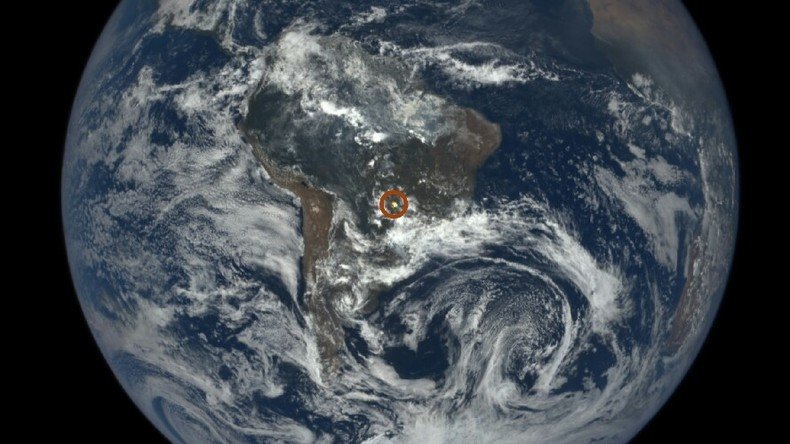Mystery solved: NASA finally cracks case of strange Earth flashes

A high-tech NASA camera has been picking up mysterious flashes on Earth that had been baffling scientists trying to discover the source of the seemingly supernatural lights. However, an explanation for the incomprehensible bursts has now been found.
NASA’s high-powered camera on NOAA’s Deep Space Climate Observatory (DSCOVR), which has been taking almost hourly images of Earth since 2015, captured 866 bursts of the strange flashes between June 2015 and August 2016.
Alexander Marshak, DSCOVR deputy project scientist at NASA’s Goddard Space Flight Center, said in a statement that he first discovered the odd flashes over the Earth’s oceans while examining images from the camera.
Marshak and a group of scientists discovered that similar reflections had been noticed over the ocean in 1993. He said the flashes could easily be explained as the sun reflecting off the water when they are seen over the ocean, but researchers were baffled when they appear over dry land.
“We found quite a few very bright flashes over land as well,” he said. “When I first saw it, I thought maybe there was some water there, or a lake the sun reflects off of. But the glint is pretty big, so it wasn’t that,” he added.
However, Marshak’s research found that the flashes have a simple explanation.
“Sunlight hits a smooth part of an ocean or lake, and reflects directly back to the sensor, like taking a flash-picture in a mirror,” he said in a press release.
Marshak and his colleagues then began to think about where else water might exist in Earth’s system – and thought of ice particles high in the atmosphere.
The team reasoned that if the flashes were caused by reflected sunlight, they would be limited to certain spots on the globe.
These spots would have to be where the angle between the sun and Earth is the same as the angle between the spacecraft and Earth, thus allowing the spacecraft to detect them.
“This helped confirm that it wasn’t something like lightning causing the flashes,” said Marshak. “Lightning doesn’t care about the sun and EPIC’s location,” he added.
Plotting the position of the flashes against the position of horizontally floating ice particles in the air finally gave the scientists the answers they sought.
Hey look, it’s Earth! NASA unveils website posting daily images of our blue marble https://t.co/5IPgwfrqAdpic.twitter.com/esMEzBvf6D
— RT (@RT_com) October 21, 2015
“The source of the flashes is definitely not on the ground. It’s definitely ice, and most likely solar reflection off of horizontally oriented particles,” Marshak said.
So there you have it – mystery solved! It was those pesky high-altitude, horizontally-oriented ice crystals after all.












